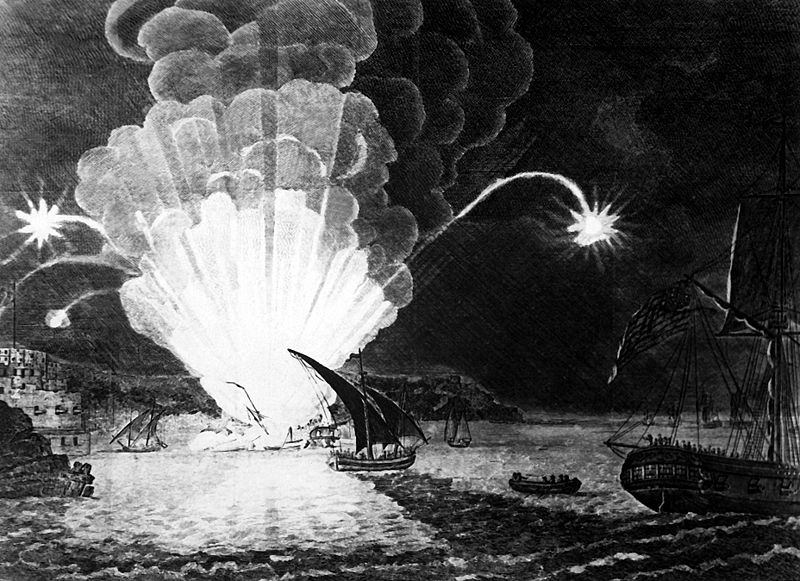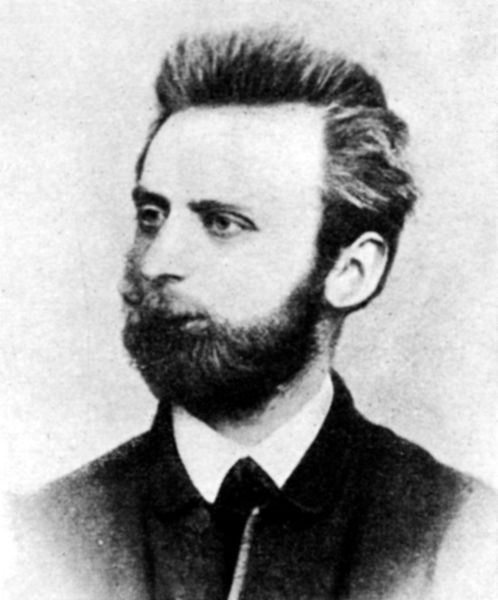Follow this link here, to a post I have put on another site, but which readers of this blog with an EOD or ECM background I think will find interesting.
Follow this link here, to a post I have put on another site, but which readers of this blog with an EOD or ECM background I think will find interesting.
The press are pretty awful at describing any given terrorist attack as something “new”. I hope this site and the blog posts associated with it show that very often there is nothing new under the sun. Tactics, technology, targets all repeat themselves in one form or another, and history is forgotten time after time. Partly this is because of the “shock” affect of terrorism, which can indeed be stunning, and partly because people (journalists and politicians included) are lazy.
In an effort to counter these, as readers of previous blog posts will have seen, I research and collect early examples of certain kinds of improvised explosive devices, It’s time to summarize a few here, some of which I’ve written about before and otehrs I will write about when time permits.
a. Letter bombs – I have details of letter bombs from 1581 (Poland) and this one from 1764 (Denmark). A Colonel Poulsen, living in Borglum Abbey, received a box through the mail. “When he opens it, therein is to be found gunpowder and a firelock which sets fire unto it, so he became very injured”
b. Vehicle bombs. The Wall St bombing in New York in 1920 is often wrongly cited as the first. There was a famous vehicle bomb in Yildiz, Turkey in 1904 and the attempted assassination of Napoleon Bonaparte in 1800, in Paris using a vehicle bomb. The concept was well known and various designs were circulated in military documentation much earlier. I’ve got some copies of those diagrams.
c. IED shrapnel coated in acid or anti-coagulant. This was trumpeted as a new horrific tactic a few years ago – but the Stern gang attempted such techniques in 1942 (along with exceptionally sophisticated “come-on” tactics) in an assassination attempt on a British Palestinian policeman. The tactical design of this attack is extremely interesting, very thorough, and I’ll post details in a few weeks.
d. Multiple VBIED attacks – attacks in Iraq ten years ago using multiple vehicles against a target such as a hotel were labelled as “new”. But British Army deserters used three trucks to blow up Ben Yehuda St in Jerusalem in 1948, each allegedly containing a ton of TNT and additional material. Their intended target was a hotel. I’m building a full post on this.
I’m indebted to John C Wideman, author of an excellent and detailed study of US civil war IEDs for information about another ship-borne IED similar to those mentioned in an earlier blog post.
The USS Intrepid was a ketch, originally named the Mastico, captured from Tripoli (now in Libya) in the First Barbary War. The First Barbary War has its origins in interesting parallels with modern piracy.
In 1804, the Intrepid was converted into a “floating volcano”, to be sent into Tripoli harbour and blown up amidst the corsair fleet adjacent to the walls of the port’s fortress. The ketch was loaded with 150 artillery shells and 100 barrels of gunpowder. Burning fuzes with a 15 minute delay were attached. a crew of 11, led by Lt Richard Somers manned the vessel. On entering Tripoli harbour, it cane under intense fire, and was unable to manoeuvre towards the intended target. The 15 minute fuze proved unreliable and the ship detonated prematurely, killing the crew who had intended escaping by row boat.

USS Intrepid exploding in Tripoli Harbour
So, it can be seen, the explosively laden ship has been a repeated tactic, since 1584:
1584 – The explosion of the “Hoop”, Antwerp, against the invading Spanish Army. This incident remains, in my opinion the IED that has killed most victims in history, with 800 – 1000 killed. Tell me if I’m wrong.
1693 – The “Vesuvius”, used by the British under Admiral Benbow against St Malo
1694 – The Dieppe Raid, and raids against Dunkirk using the same technique
1804 – The Intrepid used by the American Navy against Tripoli, North Africa
1809 – Two explosive ships used by Admiral Cochrane, against the French, in the Basque Roads. Notably these had 15 minute fuses which exploded prematurely.
1864 – USS Louisiana, used in the US Civil war against Fort Fisher, Wilmington, N Carolina.
1918 – Zeebrugge raid, by the British Navy, using a submarine packed with explosives
1942 – HMS Campbelltown rammed into the dock gates in St Nazaire by the Royal Navy.
A friend pointed me in the direction of recently declassified MI5 files, now officially and publicly available. One set of hitherto SECRET and TOP SECRET papers relates to a series of attempted IED attacks on British targets in 1947, by the Stern Gang, in the run up to the Israeli declaration of Independence in 1948. If you have the patience, there is an 88Mb download available at this link. For those of you with an interest in technical matters, the report by Her Majesty’s Inspector of Explosives on one device, planted in Dover House, Whitehall, London on 16 April 1947 is on page 239.
The devices largely failed for technical reasons. However later IEDs in 1948 were not all failures.
Elsewhere in the released documents, historians will find some of the material fascinating. MI5 demonstrably retained some of its star security officers from WW2, and they were involved, in part, in this case – people like “TAR” Robertson who ran the “Double Cross” counter intelligence operation against the Nazis in the War.
There’s some fascinating reporting of its time – telephone operators overhearing suspicious conversations, members of the public reporting concerns, police surveillance operations and pre-digital secret bureaucracy. It is interesting to see the 1947 version of inter-agency counter-terrorist coordination between Foreign Office, MI5, police forces, Special Branch and others.
A later file from 1948 is also available for download (post the establishment of the State of Israel) and others clearly can now be accessed. In May 1948 the Stern gang sent a postal IED to Captain Roy Farran of the SAS (who was accused of murdering Alexander Rubowitz) The package (addressed to R Farran), was opened by Roy’s brother Rex, killing him.

There’s a lot of attention given these days to the dissemination of such things as “Inspire” the extremist jihadi online magazine about how to build bombs and such like.
The truth is that this, like terrorism itself, is nothing really very new. In 1884 the anarchist Johann Most published “Revolutionare Kreigswissenshaft”, a self proclaimed scientific handbook for would-be revolutionaries. Johan Most popularized the concept of “Propaganda of the deed.”
While the modern day jihadist spreads his technology concepts by such things as “youtube”, “web forums” and “on-line magazines”, Johann Most used “printing presses” and “bookshops” and “newspapers” to the same effect.

Most and his work are an interesting tale. Most was born in Germany in 1846, and lived in England for a few years from 1878. Some of those English years were spent “at Her Majesty’s pleasure” in prison. He was an ardent and open revolutionary. Finally he moved to the USA 1884, and was employed by an explosives manufacturer in New Jersey, building some small degree of technical expertise. He published his book in 1884 and it is still available today still. I ordered mine openly from Amazon and I think I can justify it to the authorities.
The context of the situation in 1884 is important to understand. My American friends will, I hope, forgive me when I say that it was a pretty easy place to build IEDs. A number of US citizens were openly involved in building IEDs for profit and training people to use them.
Here’s one example of a bomb maker from Philadelphia of the same period. And another here from an earlier blog post on this site. . I have records of several others including a man in Des Moines in the 1880s who was manufacturing IEDs to be sent to support the Fenian bombing campaign in London. Iowa was a hotbed of anti-British “Fenian” feeling! Then in 1886 was the Haymarket bombing in Chicago, which I have written about in an earlier post.
The Haymarket bombs were of a type described by Most in his handbook published two years earlier. There is a link, allegedly with Most promising to send the Haymarket conspirators dynamite. He really pushed the “classic” anarchist IED of a black sphere with a burning fuse projecting from it.
The truth is that Most’s understanding of explosives is nowhere near as good as he thought it was. Perhaps that too is like modern extremist publications available on-line. The handbook has numerous technical errors but is all the more interesting for that. Clearly I’m not going into those errors here, but it’s pretty interesting to see his revolutionary ardour overtake technicalities. I would also add that most copies available are translations and I think there are some peculiar spelling errors and possible technical misunderstandings of the translator. For instance in the copies I have seen, Most describes “Oraini bombs”, which should I think read “Orsini bombs”. Also the translator clearly has no technical background – at one point complaining irritatedly that Most’s phrase “Cloral de pottage” doesn’t appear in any of the University of Arizona’s French Dictionaries. It clearly means Potassium Chlorate to anyone with a smidgen of understanding of the chemistry of explosives.
Most describes the manufacture of the chemical impact fuzing system that was in the IED used to assassinate the Tsar in 1881.
Interestingly Most advises that it is easier to obtain nitro-glycerine or dynamite legally or illegally than it is to manufacture it. Amusingly, as a revolutionary, Most doesn’t describe it as “theft” but “confiscation”. But then describing the manufacture of nitro-glycerine he views with disdain some of the safety measures that are normally advised for such projects. Most’s instructions are not detailed or specific enough and are subject to dangerous misinterpretation, especially , I suspect, the translated versions, translated by a non-chemist who I don’t think has much technical understanding.
Most describes a way in which explosives should be used to cause damage to buildings and railway lines, but most of this seems to be a “cut and paste” job from Austrian military handbooks of the time. Again, somewhat like certain extremist sites of today who recycle conventional military handbooks.
Most does occasionally have some very pertinent ideas about such things as disguise of devices.
Most describes the manufacture of a range of explosive charges and also primary explosives and incendiary devices. There is an odd, and somewhat silly section about poisons, but no sillier, I suppose than some of the nonsense on extremist websites today. I can’t really imagine copper acetate is a serious poison for the serious terrorist. He also has ideas about operational matters such as organization of an operational terrorist group.
Most takes an interesting view on the question of the right to bear arms, which he equates directly with the right to possess explosives. He attacks US lawmakers of the era who were trying to make the possession of explosives illegal, which he viewed as a first step along the road of making weapon ownership illegal. “How then would the American revolutionary be able to shoot the lawmaker?”, he asks indignantly. Finally, Most describes some very “modern” OPSEC procedures.
So the history of disseminating terrorist technology and tactics goes back an awful long way. Most was doing exactly what “Inspire” is doing now, just with a different level of media. You’d be surprised at the similarities.